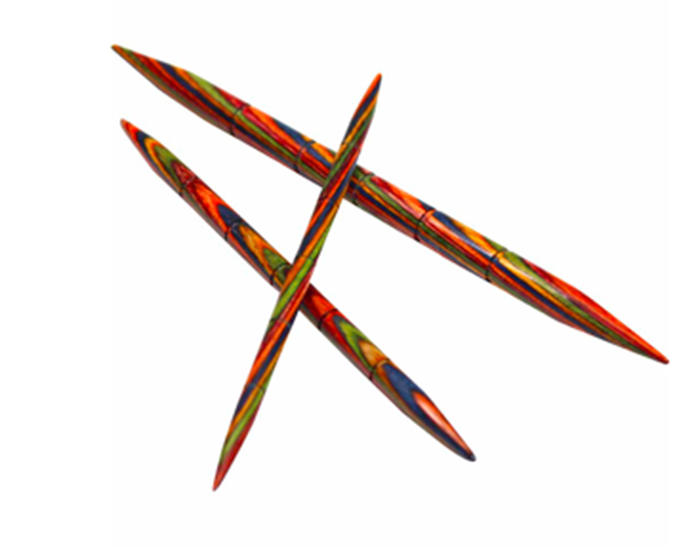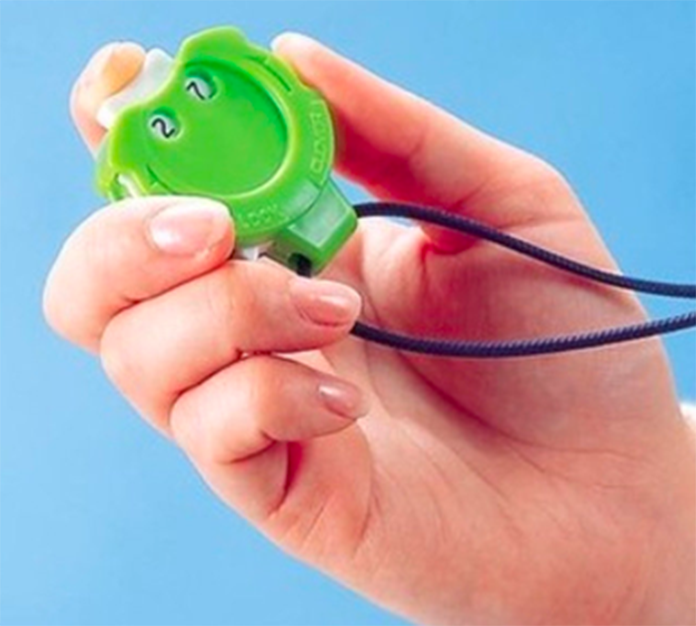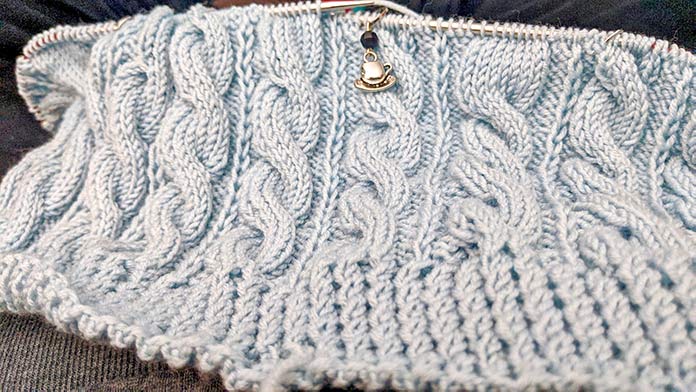This week I’m sharing with you my experience in knitting the Contours Cowl I’m knitting using Donnina Fine Superwash Merino Yarn. If you’re looking for your next project the Contours Cowl is a pretty cabled cowl with a lovely twisted rib detail.

Sporting the Contours Cowl knit up using Fibra Natura Donnina Fine Italian-Style Merino. This is a sport weight yarn instead of using the worsted weight yarn as called for in the original free pattern.
In upcoming posts there will be details on how to do an Alternating Cable Cast On and the Simply Stretchy Bind Off; how to block the Contours Cowl; and how to show of your cowl using online knitting groups. Today, however, I’ll be sharing how to choose the right knitting needles and notions for your project.
Many people think that needle size (US 4, 3mm, etc) and basic type (straights, circular, or DPN) are the only factors that need to be considered when choosing the needles for a project, but there are many other things to consider.

Choosing the right needles can make all the difference.
Besides the size and type, the most important decision I make about knitting needles is its material composition. By this I mean metal, plastic, or wood. I decided to share my process of needle choice for my Spring Contours Cowl with you when I had to switch from wood to metal after just a few rounds.
In general, I prefer metal needles, but I had decided to go with a wooden set of Knitters Pride Cubics that I had a home. I love the Knitters Pride Cubics, because these needles are square instead of round which makes them easier to grip. Since I’ve been experiencing some repetitive strain in my left hand, I thought the Knitters Pride Cubics would be best for me. Unfortunately, the ones I had were made of wood, not of metal. Wool tends to cling to wood more than metal, and I soon found knitting with them very frustrating. The stitches just weren’t moving smoothly along the needle, and this slowed me down. I usually only use wooden needles when working with particularly slippery yarns like silk to stop them from accidentally slipping off the needles. But wood was clinging a little too much to the Donnina Merino, so I needed to make a change.
At first I wanted to switch to Knitter’s Pride Zings, but I didn’t have the right size in my collection. I settled on a set of 3.75mm, 32” Knitter’s Pride Nova Platina. What a difference! After I made the switch my stitches just flew off the needles…in a good way.

In the battle of wood vs metal, this time metal won out. My lovely collection of Knitter’s Pride knitting needles: Nova, Dreamz and Karbons
The other notion that turned out to be essential for this project was a cabling needle. I usually knit cables without a needle, but this being a larger 8 stitch cable, and a finer weight yarn, I thought it wise to use a cable needle. Good thing I did! There’s no way I could have accomplished these cables as quickly and effortlessly as I did without it.

U-bend Cabling Needles by Clover
Because I had used wood before and not liked it in my knitting needle, I decided to skip my straight wooden cable needles choosing to use a plastic u-bend cable needle instead. The U-bend cable needle is the most secure to keep my cable stitches from falling off, but a wooden straight cable needle has a bit of grab that can also work, especially if they’re notched like the Knit Picks Rainbow cable needles shown in the photo below.
The benefit of a straight cable needle is you can knit the cable stitches right off the cable needle instead of shifting them back to the regular needle tip. If you aren’t familiar with these two cable needles, I suggest trying them out, and see which works best for you.

Knitpicks Rainbow wooden straight cabling needles. Notice the notches to keep stitches safe from dropping off.
The last very important accessory for this project was the row counter. I like the Mini Kacha-Kacha for two reasons.
Firstly, it has a locking mechanism, so I can throw it in my knitting bag, or have children run off with it gleefully trying to click without fear of my row count getting messed up.
Secondly, I can pull a piece of string (or in my case, yarn) through a loop on the top, and wear it around my neck, so I don’t lose it when I get up from my knitting chair. Any row counter will do, but my Mini Kacha-Kacha is my favorite chart keeping friend!

My favorite counter, Mini Kacha-Kacha, will help you keep track of all your rows.
Carefully choosing the tools you use in your knitting will make your overall knitting experience much more pleasant. Choose your weapons of yarn unwisely, and you’ll find your favorite past-time has become your enemy. You decide!
Join me tomorrow, I’ll share with you a couple of techniques for creating loose cast-ons and bind-offs to make for stretchy edges that are easy to block. Pop in to find out how to make the Alternating Cabled Cast-On and the Simply Stretchy Bind-off a part of your Contours Cowl.

Keeping the bottom border of the Contours Cowl easy and breezy with a loose cast-on.
